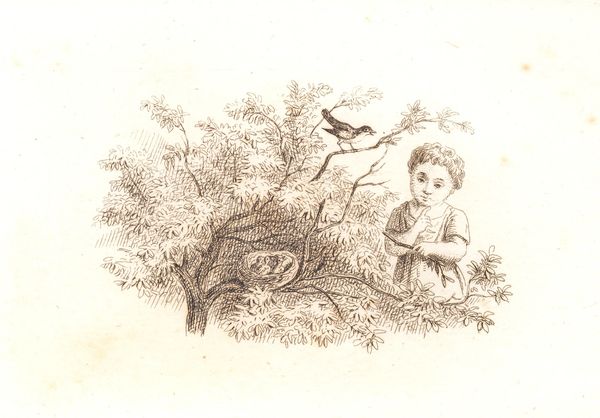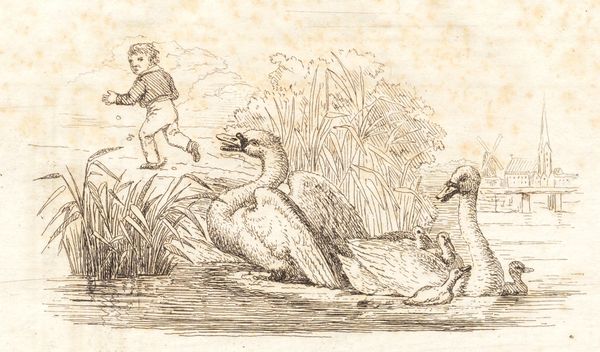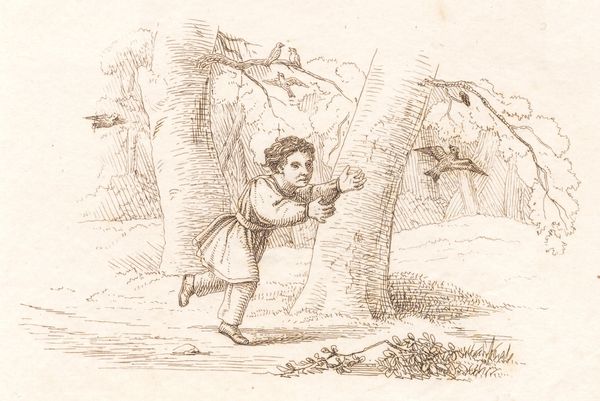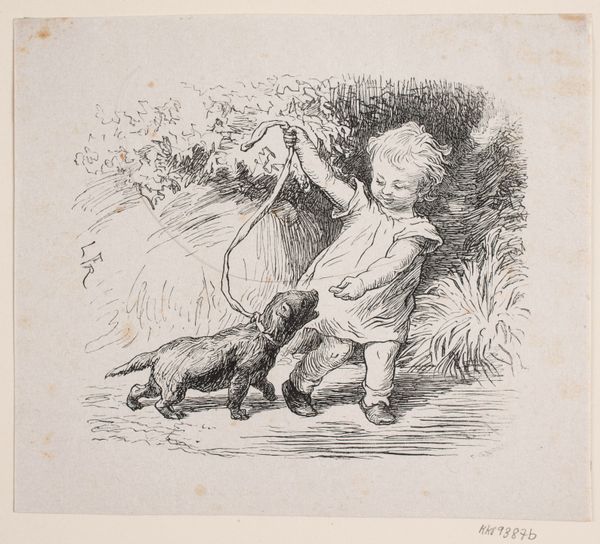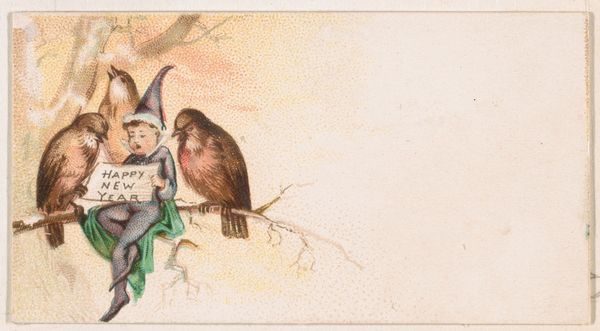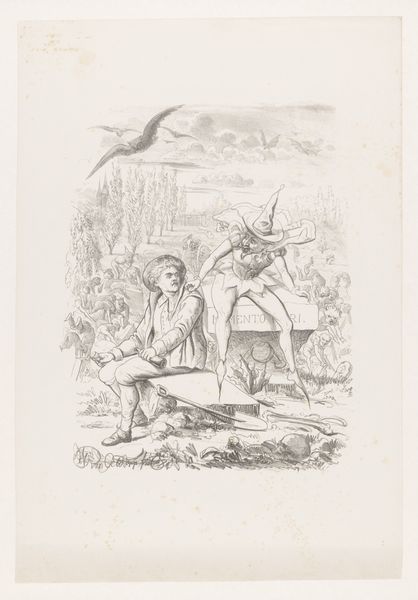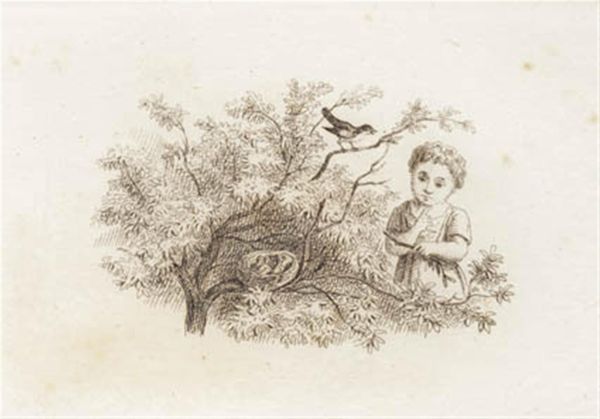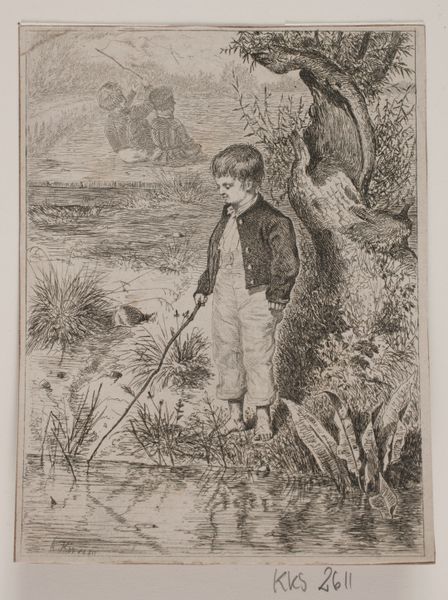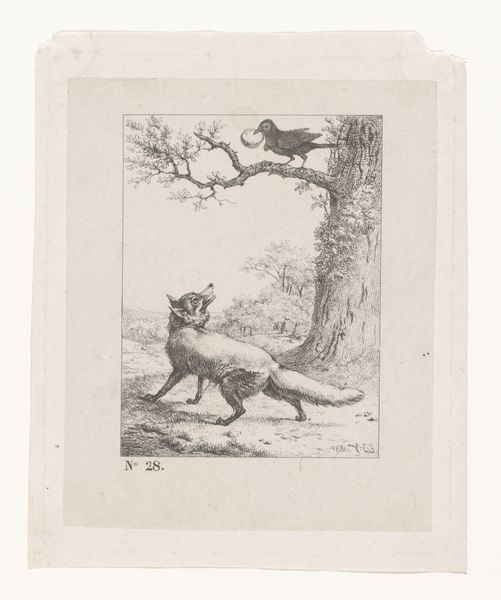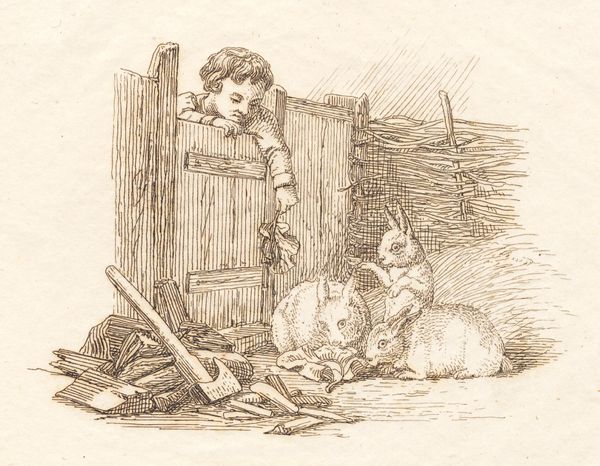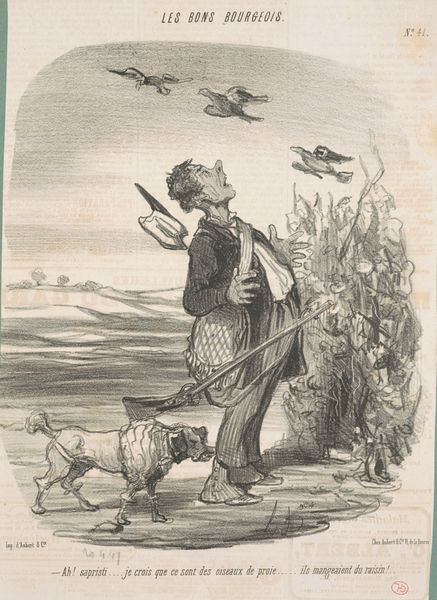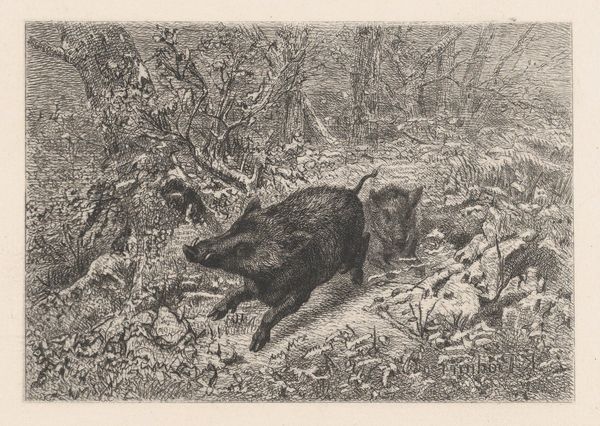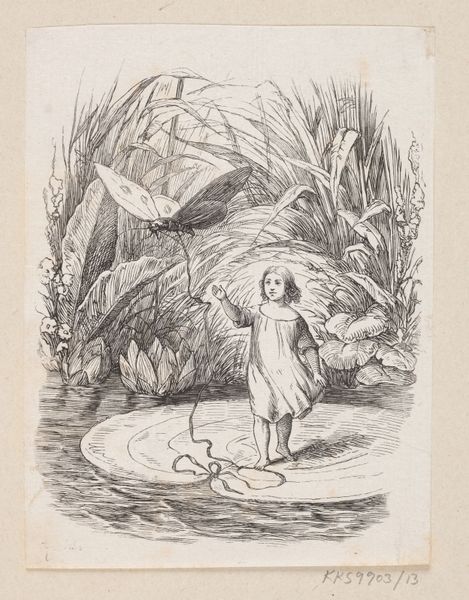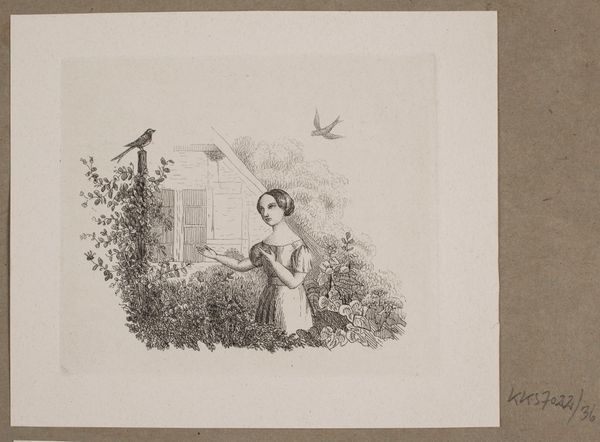
Illustration til "Halvhundrede Fabler for Børn" af Hey 1834
0:00
0:00
drawing, print, ink, engraving
#
portrait
#
drawing
#
narrative-art
# print
#
landscape
#
figuration
#
ink
#
romanticism
#
pen-ink sketch
#
pen work
#
genre-painting
#
engraving
Dimensions: 102 mm (height) x 175 mm (width) (plademaal)
Curator: This is an illustration for "Halvhundrede Fabler for Børn" or "Fifty Fables for Children" by Hey, created by Martinus Rørbye in 1834. The piece, done in ink and engraving, resides here at the SMK. It certainly feels whimsical! Editor: Indeed. I'm immediately struck by the seemingly fragile lines. The overall structure seems so delicately constructed with thin hatches and gentle curves. It’s almost as if a breath could erase the world shown here. Curator: I find it fascinating how Rørbye uses line to delineate form and texture. Notice how he distinguishes between the dense foliage and the smoother surfaces of the child’s face and tunic, which is achieved through carefully controlled tonal variations created with the pen strokes. Editor: And look at the subtle mirroring! The child observing the nest, perhaps pondering the cycle of life. Nests appear frequently throughout art history—symbols of home, family, vulnerability. What is the fable's narrative here, I wonder? Curator: We aren't certain which specific fable this illustration accompanied, however, generally such fables often explore themes of morality or nature. In a Romantic spirit, Rørbye depicts the child as a sympathetic observer, one contemplating the natural world. The use of line, tone, and space work in concert to express a world steeped in the feeling that reflection matters most of all. Editor: That resonates strongly. The symbolism of the nest and child creates a potent allegory about our own relationship with origins, care, and perhaps the delicate balance between observing and interfering. Its small size contains a grander, universal theme. The visual narrative hints at layers of meaning well beyond its simple lines. Curator: Absolutely, and on a formal level, it reminds us that the artwork need not shout to be profoundly engaging. Its nuanced composition creates something both aesthetically pleasing and philosophically rich. Editor: Precisely. This piece serves as a poignant reminder that the weight of meaning isn't always tied to scale. In fact, sometimes the quieter voices resonate more deeply.
Comments
No comments
Be the first to comment and join the conversation on the ultimate creative platform.
